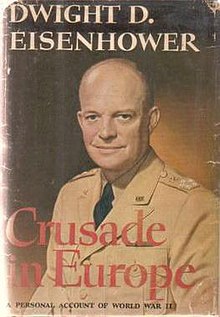
Dwight David Eisenhower, nicknamed Ike, was an American military officer and statesman who served as the 34th president of the United States from 1953 to 1961. During World War II, he served as Supreme Commander of the Allied Expeditionary Force in Europe and achieved the five-star rank as General of the Army. Eisenhower planned and supervised two of the most consequential military campaigns of World War II: Operation Torch in the North Africa campaign in 1942–1943 and the D-Day invasion of Normandy in 1944.
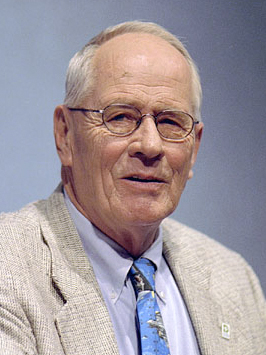
Stephen Edward Ambrose was an American historian, most noted for his biographies of U.S. Presidents Dwight D. Eisenhower and Richard Nixon. He was a longtime professor of history at the University of New Orleans and the author of many bestselling volumes of American popular history.

Earl Warren was an American attorney, politician, and jurist who served as the 14th Chief Justice of the United States from 1953 to 1969. The Warren Court presided over a major shift in American constitutional jurisprudence, which has been recognized by many as a "Constitutional Revolution" in the liberal direction, with Warren writing the majority opinions in landmark cases such as Brown v. Board of Education (1954), Reynolds v. Sims (1964), Miranda v. Arizona (1966), and Loving v. Virginia (1967). Warren also led the Warren Commission, a presidential commission that investigated the 1963 assassination of President John F. Kennedy. He served as Governor of California from 1943 to 1953, and is the last chief justice to have served in an elected office before nomination to the Supreme Court. Warren is generally considered to be one of the most influential Supreme Court justices and political leaders in the history of the United States.
Dastar Corp. v. Twentieth Century Fox Film Corp., 539 U.S. 23 (2003), was a copyright and trademark case of the Supreme Court of the United States involving the applicability of the Lanham Act to a work in the public domain.

Robert Alphonso Taft Sr. was an American politician, lawyer, and scion of the Republican Party's Taft family. Taft represented Ohio in the United States Senate, briefly served as Senate Majority Leader, and was a leader of the conservative coalition of Republicans and conservative Democrats who blocked expansion of the New Deal. Often referred to as "Mr. Republican", he co-sponsored the Taft–Hartley Act of 1947, which banned closed shops, created the concept of right-to-work states, and regulated other labor practices.

Supreme Headquarters Allied Expeditionary Force was the headquarters of the Commander of Allied forces in northwest Europe, from late 1943 until the end of World War II. US General Dwight D. Eisenhower was the commander in SHAEF throughout its existence. The position itself shares a common lineage with Supreme Allied Commander Europe and Atlantic, but they are different titles.
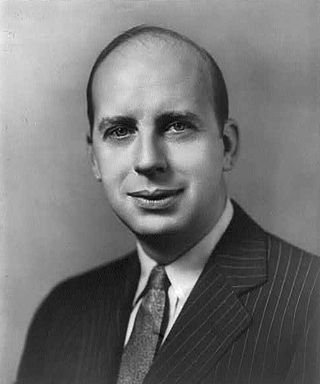
Herbert Brownell Jr. was an American lawyer and Republican politician. From 1953 to 1957, he served as United States Attorney General in the administration of President Dwight D. Eisenhower.

Kathleen Helen Summersby, known as Kay Summersby, was a member of the British Mechanised Transport Corps during World War II, who served as a chauffeur and later as personal secretary to Dwight D. Eisenhower during his period as Supreme Commander Allied Expeditionary Force in command of the Allied forces in north west Europe.
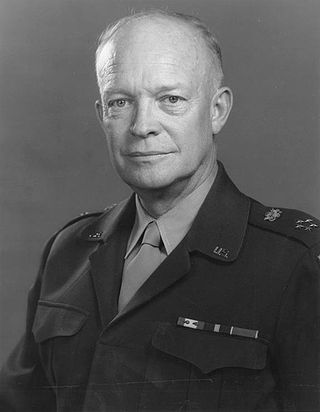
The military career of Dwight D. Eisenhower began in June 1911, when Eisenhower took the oath as a cadet at the United States Military Academy at West Point. He graduated from West Point and was commissioned as a second lieutenant in the United States Army in June 1915, in the same class as Omar Bradley. He rose through the ranks over the next thirty years and became one of the most important Allied generals of World War II, being promoted to General of the Army in 1944. Eisenhower retired from the military after winning the 1952 presidential election, though his rank as General of the Army was restored by an act of Congress in March 1961.

The Draft Eisenhower movement was a widespread political movement that eventually persuaded Dwight D. Eisenhower, former Chief of Staff of the United States Army, to contest the presidency of the United States.

The Last Battle is a 1966 book by Cornelius Ryan about the events leading up to the Battle of Berlin in World War II.
During his two terms in office, President Dwight D. Eisenhower nominated five members for the Supreme Court of the United States: Chief Justice Earl Warren, and Associate Justices John Marshall Harlan II, William Brennan, Charles Evans Whittaker, and Potter Stewart. All were confirmed by the Senate.
Rafael D. Palacios (1905–1993) was a Puerto Rican-American freelance artist and illustrator specializing in book jackets and maps for major U.S. publishers in the mid- and late 20th century. Among the notable maps of his prolific and highly successful career are those in most of Isaac Asimov's history books and in Bruce Catton's Civil War books.
Twentieth Century Music Corp v. Aiken, 422 U.S. 151 (1975), was an important decision of the United States Supreme Court, out of the Third Circuit, that questioned whether the reception of a copyrighted song on a radio broadcast constitutes a copyright violation if the copyright owner has only licensed the broadcaster to "perform the composition publicly for profit".

The Vinson Court refers to the Supreme Court of the United States from 1946 to 1953, when Fred M. Vinson served as Chief Justice of the United States. Vinson succeeded Harlan F. Stone as Chief Justice after the latter's death, and Vinson served as Chief Justice until his death, at which point Earl Warren was nominated and confirmed to succeed Vinson.
This bibliography of Dwight D. Eisenhower is a list of published works about Dwight D. Eisenhower, the 34th president of the United States.
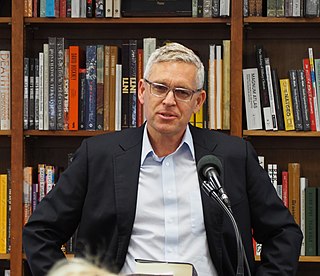
William I. Hitchcock is the William W. Corcoran Professor of History at the University of Virginia. His work focuses on the history of the 20th century.
Fox Film Corp v. Doyal, 286 U.S. 123 (1932), was a United States Supreme Court case in which the Court held that states may tax copyright royalties, as they can patent royalties, because even though copyrights & patents are granted by the federal government, they are still private property subject to taxation.

Harry Morgan Ayres was a professor of English Literature at Columbia University an author, and editor. He edited The Reader's Dictionary of Authors including entries for Charles William Eliot, Wilfrid Wilson Gibson, and George Moore and also contributed to the Library of the World's Best Literature.

The June 6, 1944, order of the day was issued by Supreme Commander of the Allied Expeditionary Force General Dwight D. Eisenhower to Allied forces on the eve of D-Day, the first day of the invasion of Normandy. The message was intended to impress upon the troops the importance of their mission which Eisenhower called a "Great Crusade". Eisenhower had been drafting the order since February 1944 and recorded a spoken version on May 28, that was broadcast on British and American radio on D-Day.
